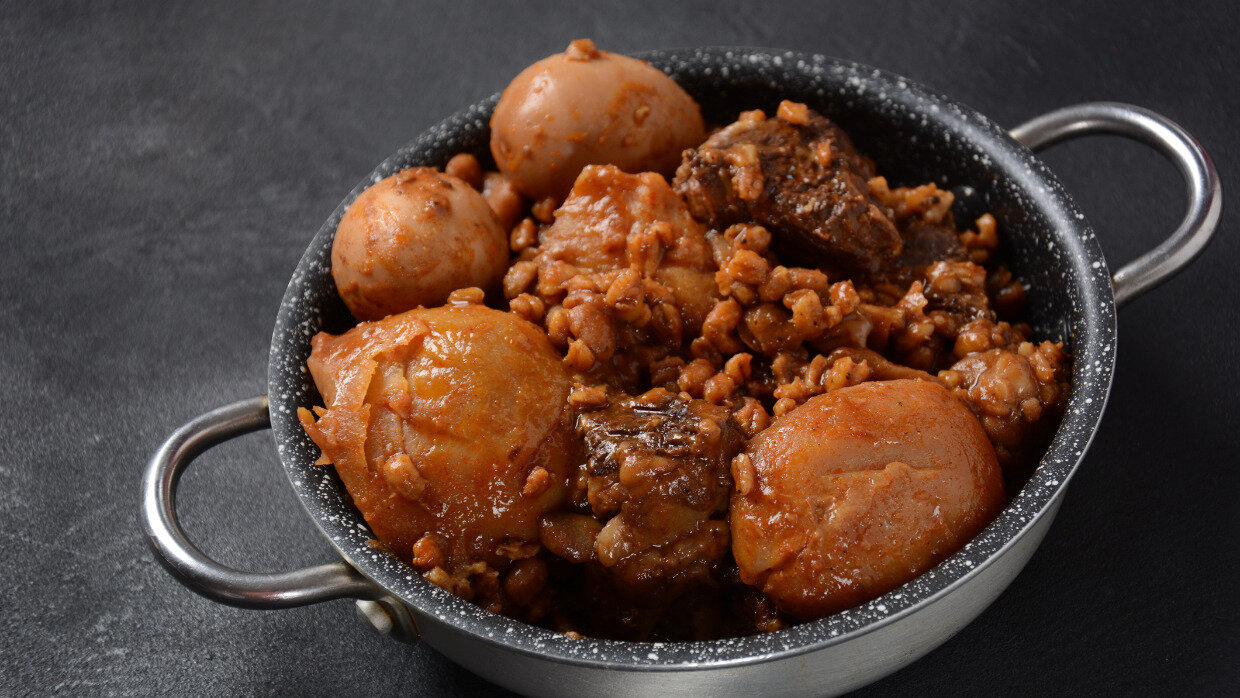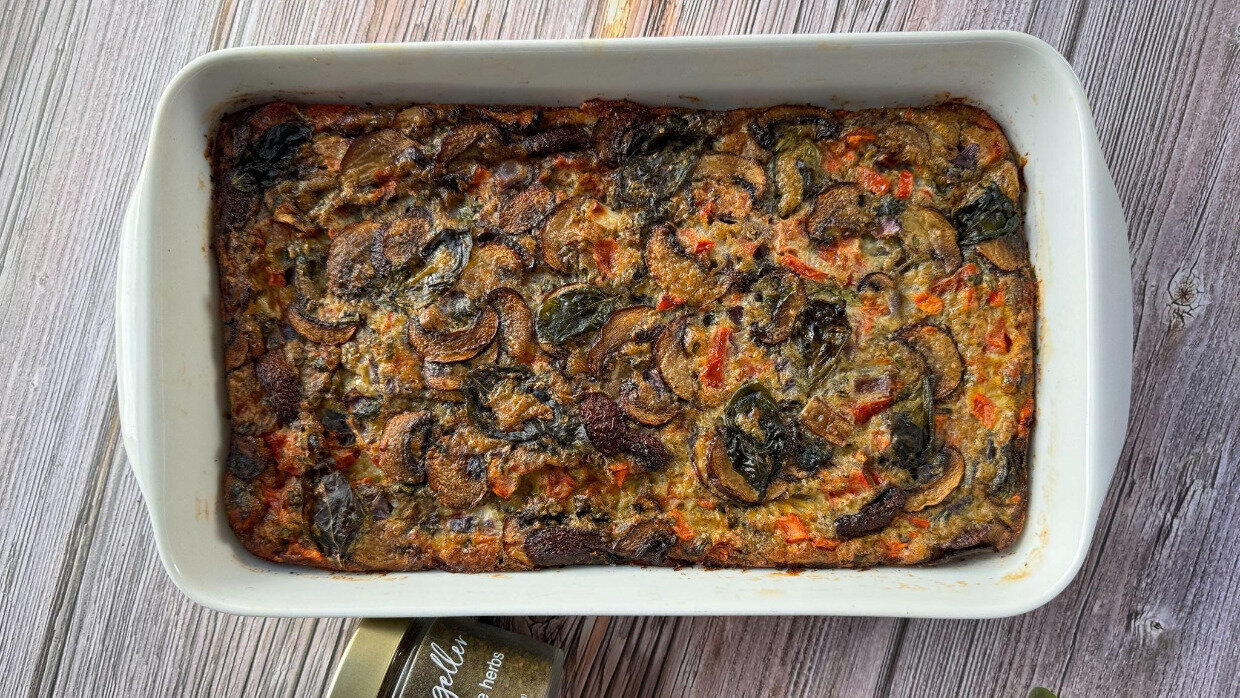Before there were bagels, gefilte fish, and kugel, there was chamin. It is probably the oldest surviving dish of Jewish cuisine. The word chamin derives from the Hebrew word for hot, cham, so chamin basically means a hot food.
I first learned about the origins of chamin from my rabbi, Rav Aharon Vernikovsky, in Germany. After the fall of the Soviet Union, Germany extended visas to Jews from Eastern Europe, inviting them into different German cities to revive Jewish life there. However, since the Soviets repressed Jewish religious activities so heavily, the majority of these Jews knew very little of their heritage. A large number intermarried with gentiles. But one tradition many Jews kept was cholent, the Ashkenazi cousin of the chamin. Among other details, the German rabbis counted cholent as unique evidence that someone was indeed Jewish.
My rabbi also told me there is evidence that Jews began cooking stews for shabbat over 2000 years ago, when the Mishnah (the Jewish oral law) first regulated what constitutes cooking on shabbat. In chapter 2, verse 7, the Mishnah refers to covering hot food on the evening before shabbat, saying “tomnin et haChamin.” According to Katalin Franciska Rac’s 2020 article “How Shabbat Cholent became a Secular Hungarian favorite,” the name chamin comes from the phrase I referenced in the Mishnah, and the word cholent can be traced to the French word for “warm,” which implies that both Sephardi and Ashkenazi communities trace this dish back to ancient times. To learn more about the mishnah, click here.
What sets chamin apart from cholent, is the separation of grains from the stew. In chamin, barley, and often rice, are cooked in a roast bag, cheesecloth, or smaller casserole pots that are inserted into the stew. Once the chamin is ready, the grains are served dry, as a side dish. In this recipe the stew has the consistency of a soup. I prefer to remove most of the solid ingredients from the soup when I serve chamin, and I use only a little liquid to baste the grains on my plate.
Different recipes for shabbat stews have popped up in all Jewish communities. This includes tabeet, chamin, adafina, and cholent. While they differ in some ingredients, they are all based on grains, vegetables, and meat for those who could afford it. All of them are prepared and put on a heat source before shabbat, so they can continue cooking until shabbat afternoon.
Speaking of family traditions, I based this recipe on my father-in-law’s Algerian chamin. I add carrots and chili powder to give the chamin a darker color.
I hope this chamin warms your heart - from my kitchen to yours.
Ingredients
- ¼ cup canola oil divided
- 1 pound shank beef or beef stew cut into cubes
- 1 onion
- 1 cup dry chickpeas or 1 15.5 oz can chickpeas
- 1 ½ cups baby carrots
- 4 medium sized potatoes
- 7 tablespoons consomme divided
- 2 tablespoons paprika
- 1 tablespoon chili powder
- 1 cup raw barley
- 1 cup raw rice
- 2 cloves garlic
- 2 slow cooker liner bags
Nutritional Facts
Instructions
- Pour 2 tablespoons canola oil into a pan. Add the meat and set heat to the highest setting. Fry the meat, turning it over as necessary, until the outside is browned. Place meat into a 6 quart slow cookers and cover it with the lid.
- Remove the outer layer from the onion and cut off the top and bottom. Without cutting all the way through, slice into top of the onion three times, making a star shape. This will make serving the onion pieces easier when the stew is ready. Add the onion to the slow cooker.
- In a small 2 ½ quart sauce pan, boil chickpeas with a quarter teaspoon baking powder for ten minutes. Discard the remaining water and transfer the chickpeas into the crockpot. If you're short on time, you can use a can of chickpeas instead, discard the water and add it to the slow cooker.
- Add carrots to the slow cooker.
- Wash and peel the potatoes, add them into the slow cooker whole.
- Pour three tablespoons of consomme into the crockpot, as well as the paprika, salt, and chili powder.
- Wash barley in a sieve until the water is clear. Transfer barley into a slow cooker bag and add 1 tablespoon of oil and 2 tablespoons of consomme. Mince a garlic clove and put it in the liner. Hold the liner closed with one hand and shake the liner to coat the barley and garlic with the oil and consomme. Open the bag and pour in a cup of water. Tie and poke an air hole into the top of the bag. Cut off the excess plastic on the top. Put the liner into the slow cooker.
- Repeat step 7 with the rice but only add ¾ cups of water instead of 1 cup into the bag.
- Add remaining oil and 2 quarts water into the slow cooker until it reaches up to an inch below the top of the slow cooker.
- Cook on the low setting for 12-14 hours. Remove barley and rice from their bags and serve on a plate. Serve stew in a bowl. Unlike cholent, this stew will have the consistency of soup. Shabbat Shalom!
















The powder. Sorry.
When you write 7 T. consommé, do you mean the liquid broth or do you mean powder, please?
The powder